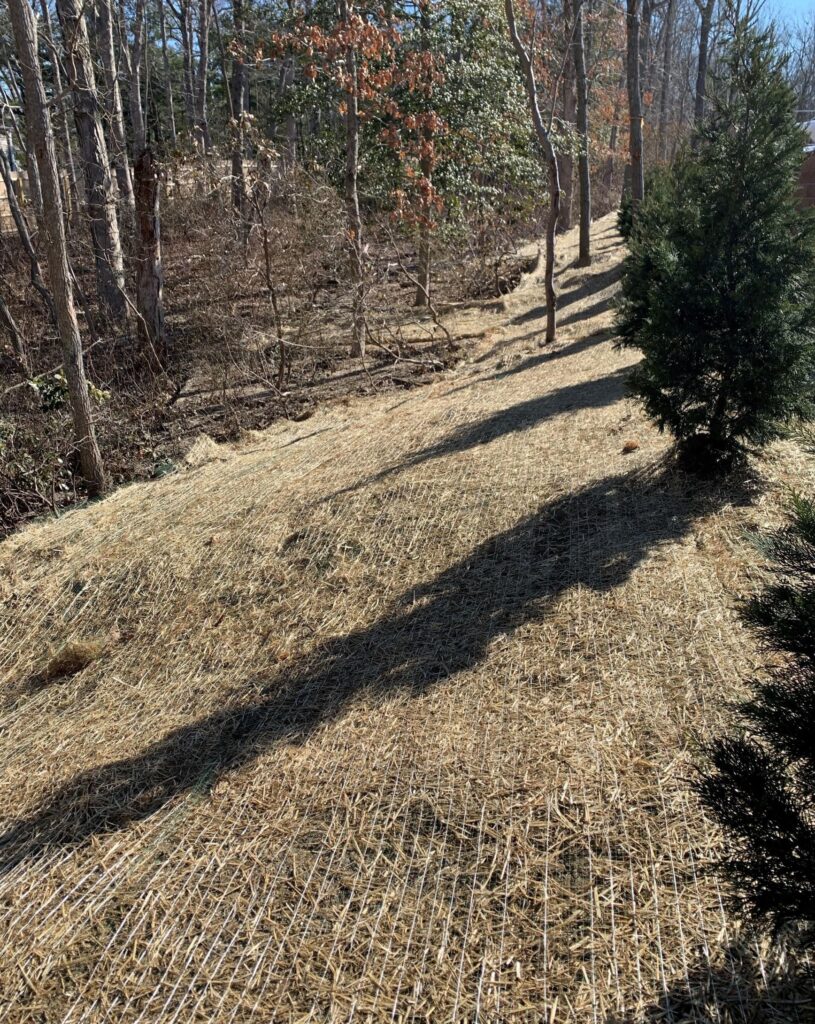A Look at Seeding and Stabilization Practices
USDA Plant Hardiness Zones for New Jersey

Ocean County lies within three different plant hardiness zones – defined by the United States Department of Agriculture as: 6b, 7a and 7b. The majority of seed mixtures approved for use within the New Jersey Soil Erosion and Sediment Control Standards (NJ SESC Standards) have optimal planting dates from August 15th until October 30th. This is the time of year to prepare your soil and plant your grass seed for a successful healthy lawn. While a variety of seed mixtures are approved for use, the most common form of Permanent Vegetative Cover for Soil Stabilization observed by the District staff is turf grass. It is important to note: no project within Ocean County can receive a Report of Compliance until all disturbed areas of the project have been permanently stabilized, as per the NJ SESC Standards.
Why Stabilize Soil

The Standard for Permanent Vegetative Cover for Soil Stabilization is defined as the establishment of permanent vegetative cover on exposed soils where perennial vegetation is needed for long-term protection. Permanently stabilizing the soil is vital to ensuring the conservation and protection of soil and water, ultimately leading to an enhanced environment. Stabilization ensures water quality by slowing the over-land movement of stormwater runoff, increasing infiltration, retaining soil and nutrients on site, and protecting streams or other stormwater conveyances. Photo by Georgie Grieb, Inspector 1
Seeding 101

When planting seed for growing turf grass, several components are necessary to ensure optimal growth and permanent stabilization. The most important feature of seed bed preparation is good quality topsoil; it should be free of debris and not contain substances or chemicals that could inhibit plant growth. The New Jersey Soil Erosion and Sediment Control Standards require a minimum of 5 inches of unsettled topsoil to be applied just before seeding. A soil test shall be conducted to determine the quantity of lime and fertilizer type best suited for the topsoil used. The NJ SESC Standards require 11 pounds per 1000 square feet of 10-10-10 fertilizer for permanent stabilization with grass. Both lime and fertilizer need to be uniformly spread over the desired seeding area and worked into the topsoil. When applying seed, note that good seed to soil contact is essential for germination. After seed application, mulching with straw and anchoring the mulch down will increase soil moisture retention and help promote germination of the seed. All these techniques are described in detail in the NJ SESC Standards. Photo by Georgie Grieb, Inspector 1
